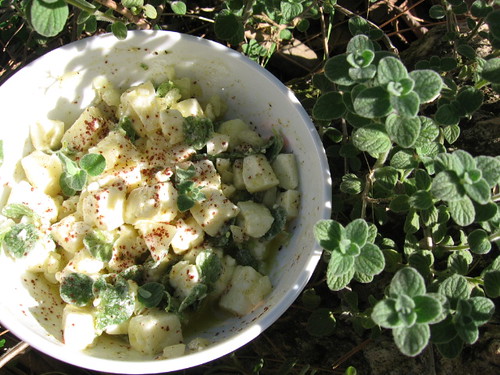Za'atar and Sahleb
The parcel that arrived from my mom today delivered more than silk scarves with shimmering coins. It brought with it the mountain air, filled with the mosque-chants of mouazines from nearby villages and the rustic perfume of za'atar. An herb grown wild mostly in Lebanon and the northern parts of Israel, with aroma reminiscent of oregano but milder and sweeter (less pungent and peppery). It can be used fresh, but is more commonly used after it has been dried - it is than kept for seasoning all year around, mixed with sesame seeds and sumac (the latter adding a salty-soud flavour).
This mixture is a staple food in the Middle East, and when mixed with olive oil is used for pita-dipping or spreading on bread, it's as popular as butter, really (only with none of the cholesterol associated with butter). It is also used to top-off Labaneh (a yoghurt cheese, which you can easily make at home yourself, by straining plain and pure yoghurt, preferably of the most sour type you can find, through a cheescloth or a coffee filter; add salt to taste and sprinkle with za'atar and drizzle some olive oil on top before serving). It can also be used to season salads - no salt will be necessary if your mixture includes sumac. The fresh sprigs can be fried lightly in olive oil and than served on fresh bread. They can also be added to salads, pasta sauces and stews.
Half of the small bag of za'atar got spilled on my kitchen floor, unfortunately; the better part was that for several moments, the kitchen smelled like a walk on the mountain behind my house in my home village, in the end of the winter when there are za'atar leaves in abundance and awaiting harvest by shepherds and other passersby.
On another (mental) note, I spent the best part of the morning in the lab replenishing jus for many perfumes that were sold out. The latter being Sahlab, a creamy-starchy orris and musk scent which I decided to wear for the rest of the day. Flavours of my homeland been an important part of my day.

